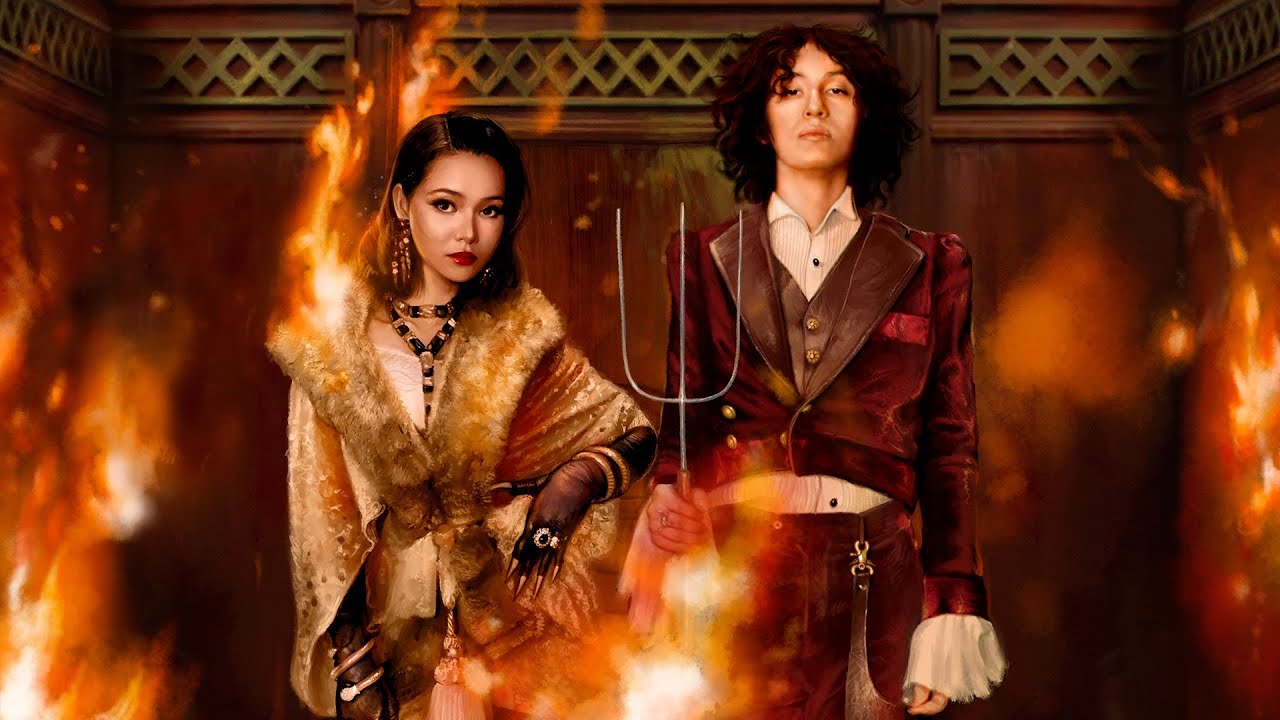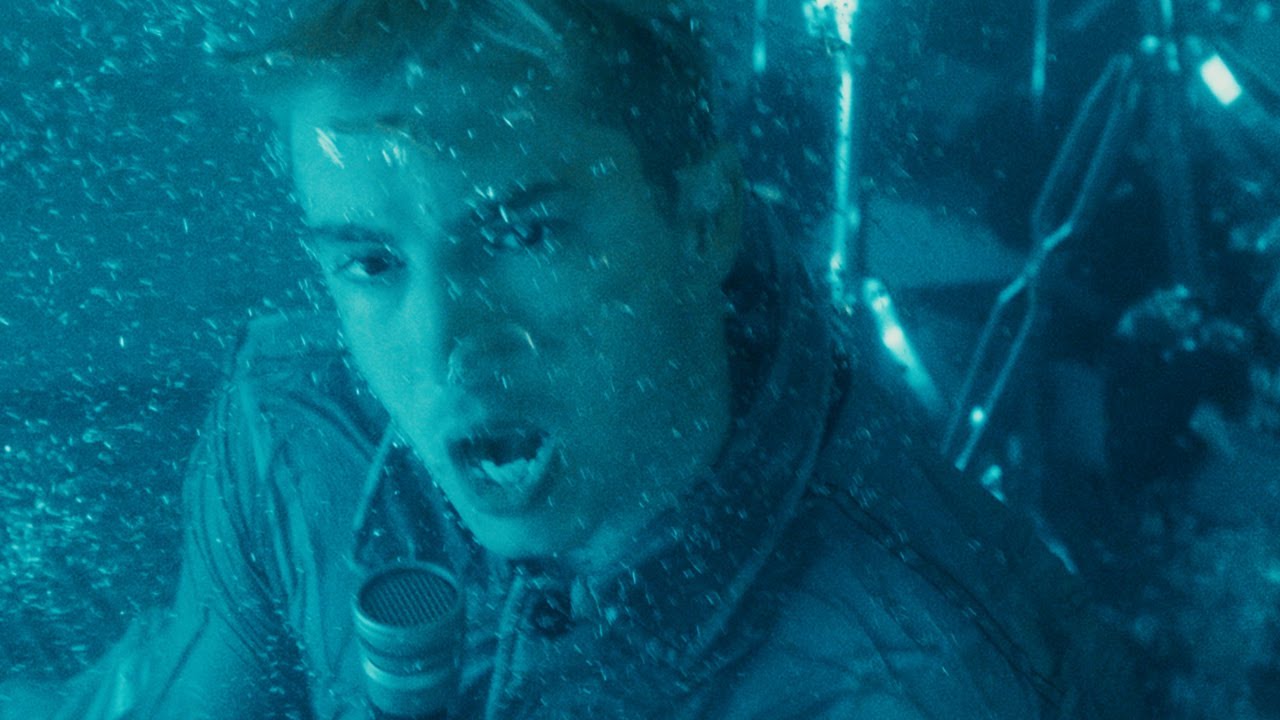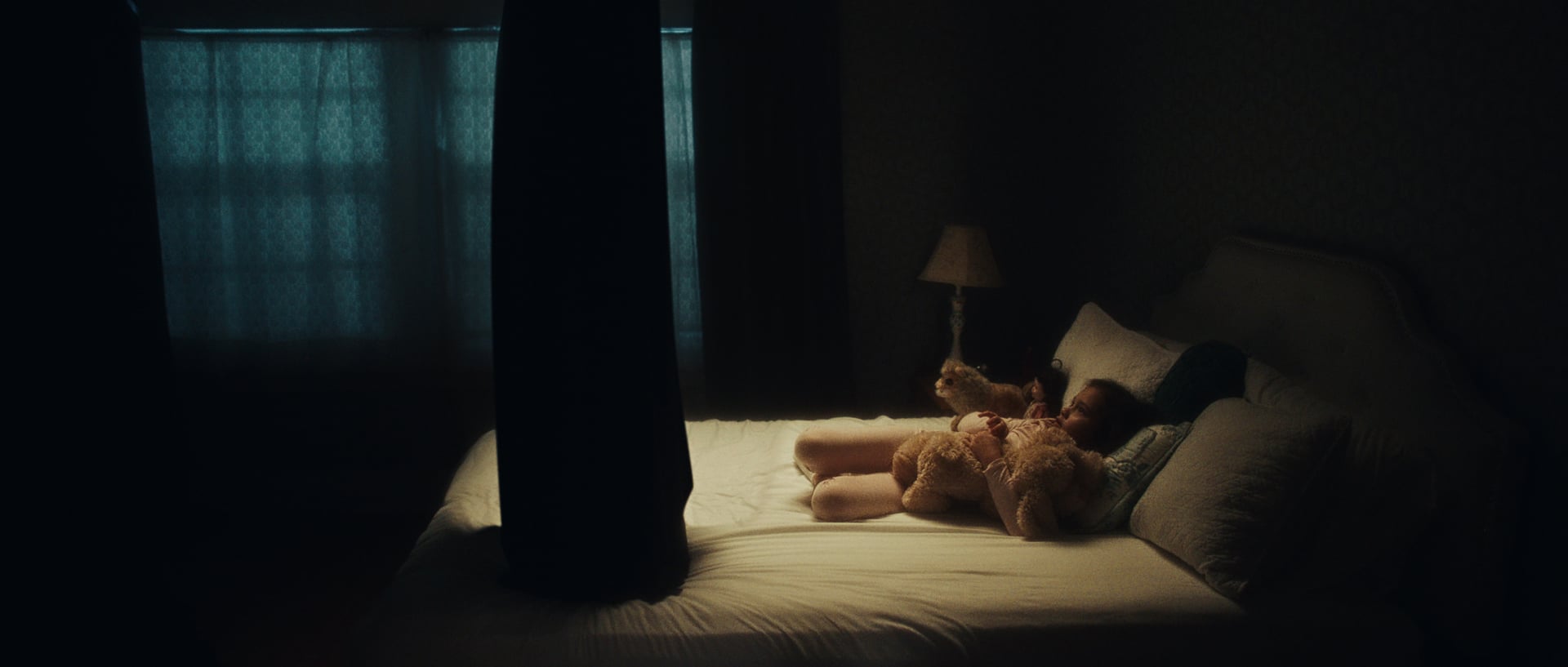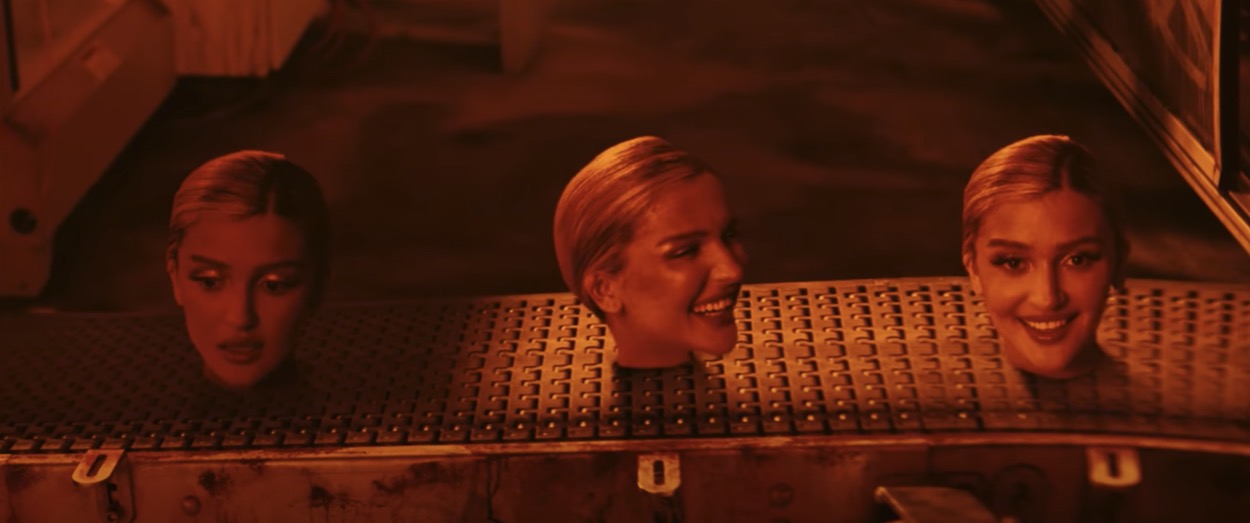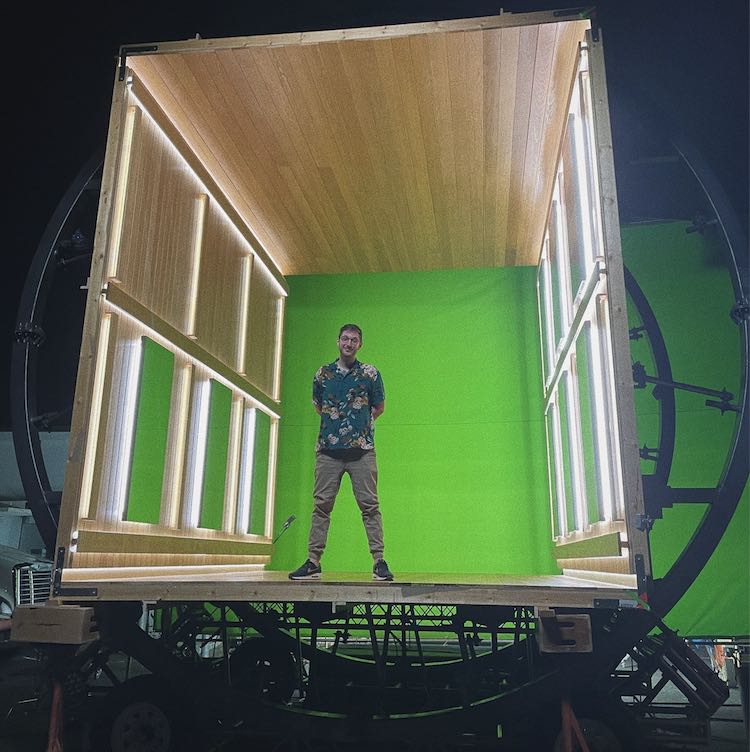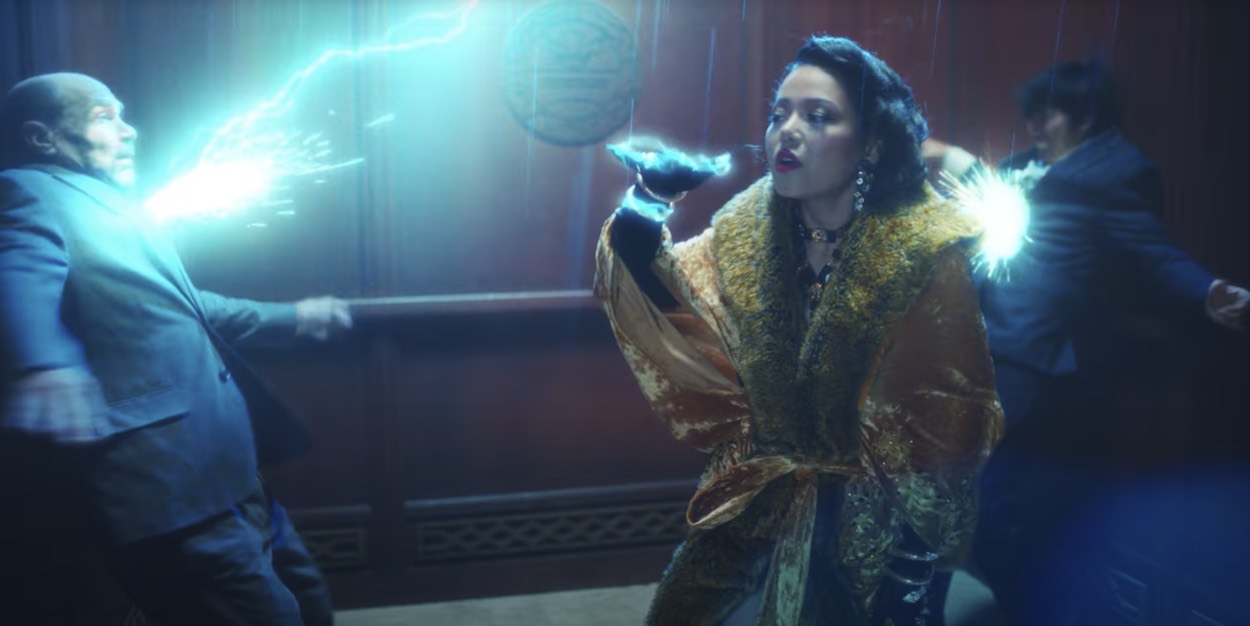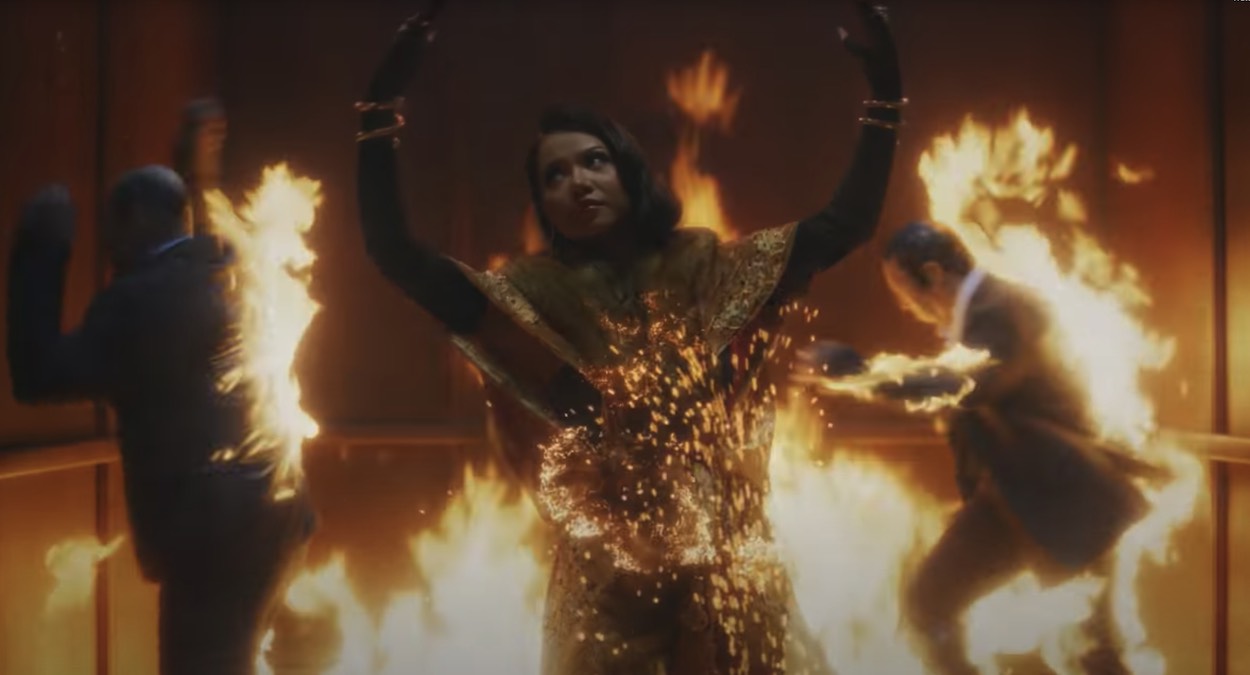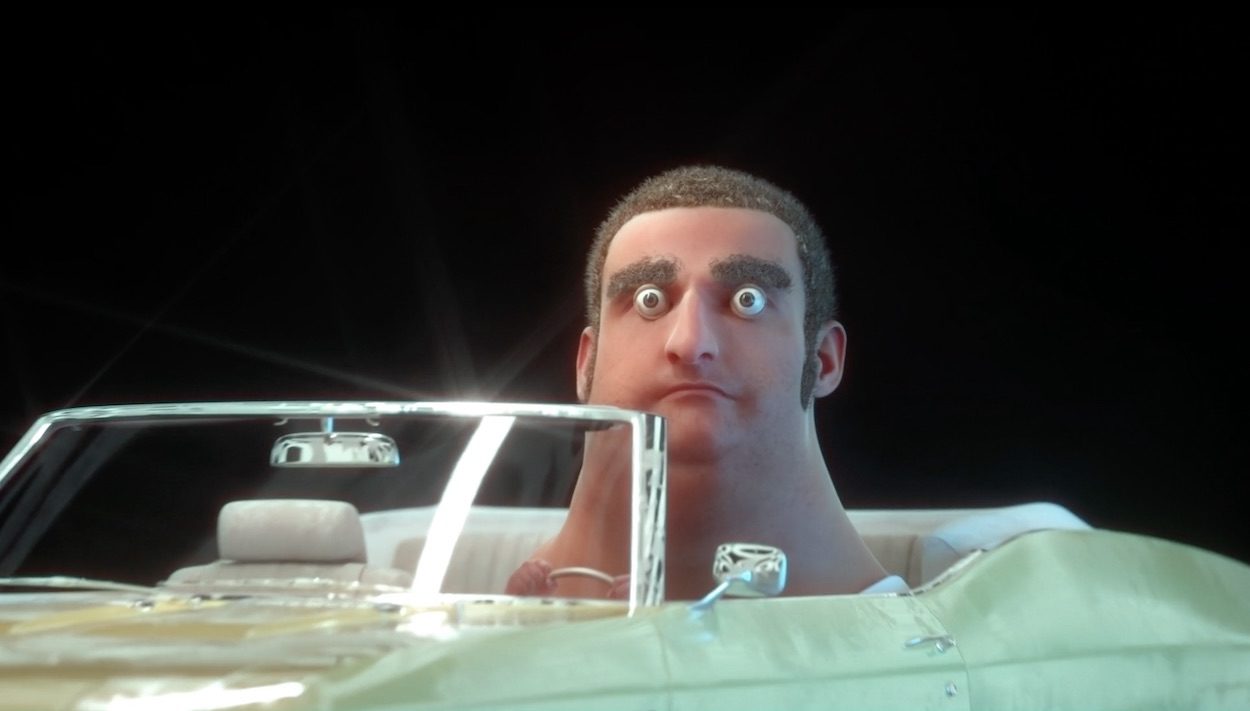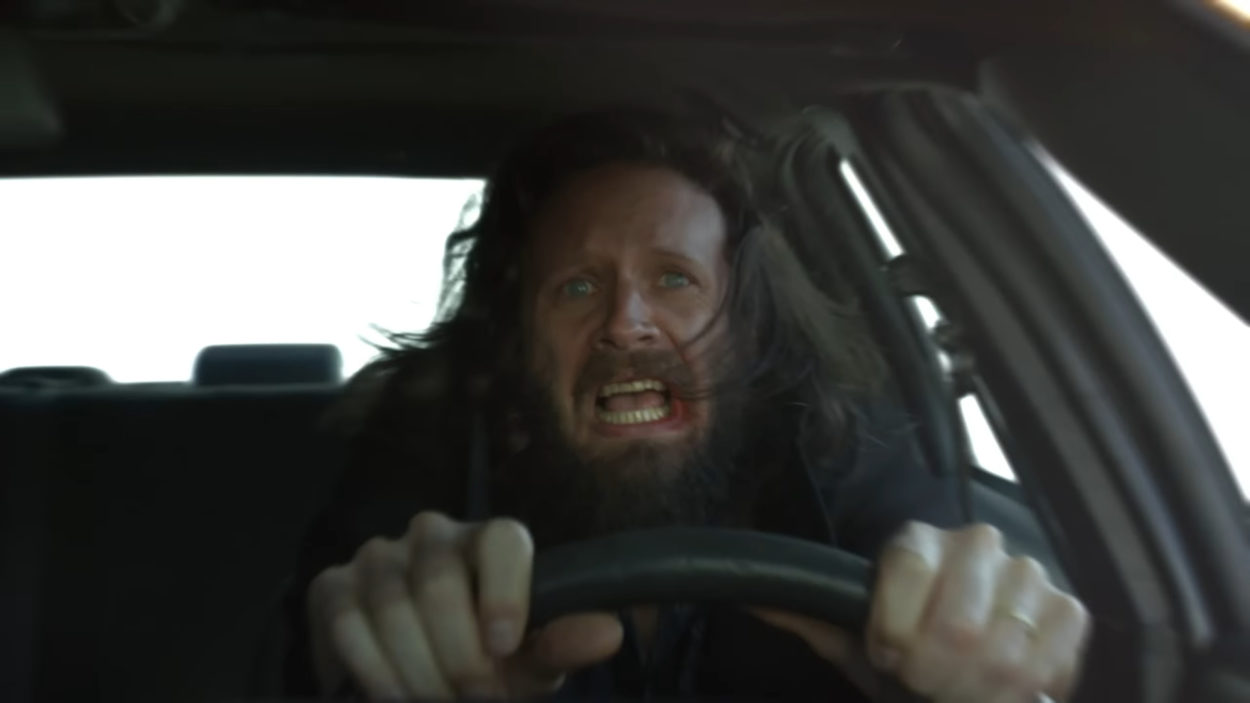From Build a B*tch for Bella Poarch
You’ve said that you were ‘raised with a camera’ – tell us about your upbringing.
I grew up around Atlanta in a very religious, conservative family. My dad was actually a youth pastor. Video cameras were always on in my household. My mom made endless home movies and my dad organized video production for his Christian camps and our church. I started learning animation, visual effects, acting, and photography as early as middle school. I spent most of my free time as a teenager making small movies and trying to learn the filmmaking process.
And yet your video consumption was limited?
I wasn’t allowed to interact with MTV, ‘explicit’ movies, or most of secular culture. Little did my parents know, this stoked my ravenous hunger for left-of-centre stories, unique perspectives, and the deep. dark depths of cinema and music. Leaving for film school, they became my new church. I disagree with a lot of my upbringing, but I’m thankful that it cultivated a crystalized passion for storytelling and a fiery desire to find beauty and magic in the world around me instead of a world after death.
What were the earliest music videos and/or directors to make an impression on you?
Music videos didn’t start making a massive dent in my life until I started shooting (mainly because I wasn’t allowed to watch MTV as a kid). When I got deeper into directing, I began spending hours every night watching Vimeo’s swell of beautiful, low-budget online short films. After MTV died, before YouTube went HD, and way before the internet became riddled with DMCA takedowns and red tape, the internet birthed a beautiful moment where a few dozen directors shot music videos without budgets for a niche audience on Vimeo. Directors like Daniels, Hiro Murai, Young Replicant and AG Rojas were putting out stunning work, and the best part was the fact that their approach felt attainable. They were bringing incredible concepts to life with little to no money.
Deepfake at work on Paul McCartney
As a former VFX supervisor, it’s not surprising that your work deploys cutting-edge technology. We’re particularly intrigued by your use of deepfake.
For me, Deepfake and AI-driven VFX tools are the most fascinating things happening right now in tech. The scary − and amazing − part of machine-learned visuals is that the computer does all of the design work, while the technicians mainly guide the process and troubleshoot. Sometimes deepfake will look flawless and other times it will be terrifyingly awful! The lack of control is the main reason that larger studios haven’t fully embraced the technique yet. It feels like directing a drunk, deaf, savant child painter.
I wrote video concepts for The Strokes [Bad Decisions] and Paul McCartney [Find My Way] knowing that if the face replacement fell apart, we could creatively embrace it. For The Strokes, we were actually hoping the deepfake would look creepy. The other major hurdle is that the technology cannot change the shape of the face, only the features, so casting solid lookalikes for characters is key.
On McCartney, we spent hundreds of hours after the deepfaking to reshape the face, fix broken frames, and smooth out the results as much as possible. The most unexpected problem was finding out deepfakes do not like red lighting. The ending sequence with the star silhouette was born from the failing of the face replacement during that scene, which we lit entirely red and gold.
Your latest commercial for Lululemon, called Mirror, blurs the line between live action and effects. Was this a straightforward production?
The Mirror commercial definitely had tons of challenges, ranging from removing camera reflections in the mirror to physically expanding set walls and even creating the illusion of a 300-foot hallway with hundreds of actors on the floor and the ceiling. We shot our 16ft wooden set multiple times on a motion-controlled crane to create this illusion.
Motion control repeats a camera movement flawlessly in order to stitch together scenes, then you cut out the elements frame-by-frame (rotoscoping) to layer them together. This, in some form, has been done for decades. The reason it wasn’t straightforward was because of time: we had a rushed delivery with a small post team and also needed to show our client a version of the final effect within the edit to refine the takes and ensure that all of the workouts were performed perfectly. We ended up using a machine learning/AI solution that revolutionized the edit and the previz process for us.
Andrew Donoho on the rotating mirror set
How did that work?
We used a machine learning rotoscope tool called Runway to cut out hundreds of actors from the background without greenscreen, then we could stitch all of the motion control shots back together without a single VFX artist in the room. In less than a day, our editor was able to generate the mattes for dozens of shots and place a temp version of the effect into our edit: This is a process that would take a single artist months. Of course, we needed our VFX team to perfect the mattes for the final version, but the fact this type of previs was even possible would have been science fiction just a few years ago.
Strong storytelling and characters are also at the core of your work. Where do you find inspiration?
In terms of direct inspiration, music and dreams have always been creative gasoline for me. Growing up, I had incredibly vivid night terrors. The terror part has mostly gone away as I’ve aged, but the vivid, fully fleshed-out dreams have remained. They often create the foundation for my music videos and scripts. If nothing else, dreams give me images and ideas to ruminate on when I’m awake, to spark more ideas. Similarly, when I listen to any song, I can’t help but imagine an atmosphere, character, or story to go along with it.
Even outside of music videos, a lot of what I’ve written started as a concept unfolding during an album listening. Sometimes, when I’m stuck on a scene or a concept, I’ll try to find a song that plays out the way I want the scene to feel and use that as a springboard for ideas.
Sub Urban & Bella Poarch, Inferno
We love your recent video, Inferno, for Bella Poarch. There must have been a lot of pressure to follow-up on the earlier success of Build a Bitch.
Oh man, there was so much pressure on that video. I worked very closely with Sub Urban, Bella’s creative director who was the other artist on the track, and we based the concept on a dream he had involving a hellish hotel in the centre of a desert. We combined the dream with inspiration from Dante’s Inferno, then housed it all within Bella’s desire for a fantastical revenge story based on her own experiences.
The first treatment I wrote, while trying to make something bigger and better than Build a Bitch, would have been impossible on any budget. It involved ten different time periods, ten different looks, a living/moving hotel hallway, 25 cameos, millions of dollars in set builds, and shot in an Eastern European hotel. Obviously, we had to change our approach.
We decided to rescript the video around a story that connects to the song and milks a single location in a variety of absurd and unexpected ways. There are definitely some cameos and insane practical effects, but now the video stands on its own feet without relying on being ‘bigger’ than the last. After a hectic three-day shoot, several reshoots, directing seven cameos over Zoom, and one of the fastest VFX turnarounds I have ever had, I’m very proud of the video.
What are your favourite aspects of Inferno?
The biggest challenge after our rewrite was making an 8ft x 8ft box feel interesting for three minutes. It was a unique problem because rarely would a large pop video ever exist in such a confined space. Without a stunning location, provocative set builds, or enough space for intricate camera work and lighting, we had to really flesh out and plan how each scene would use the space. I’m really stoked with where it landed. I don’t think it ever feels boring in the elevator.
A lot of my favourite visual effects and camera tricks are the ones you can’t see: where the wires for stunts would go, where lights could be placed, how to wrap the camera around Bella without any room, how to have water and open flames in a confined area, etc. Who would have thought that a wooden cube would be one of the most difficult sets I have ever had to film?
Stuntmen on fire for real in Sub Urban & Bella Poarch, Inferno
Where do you stand on VR and AR?
There are so many crazy things happening in cinema right now. I really enjoy AR and VR, but I feel like they work much better with fully digital environments. Creating a 360-degree, live-action environment drastically reduces my ability to light, draw the attention of the eye, build an intricate set, and utilize practical effects that currently need rigging and safety precautions a few feet off screen. I don’t want to spend half my art budget building a world behind that subject that they will only see if they turn around.
I also feel like the current live action 360° cameras, at their very best, cannot hold a candle to the immersion and beauty created by a well-placed, well-lensed camera that is lit and colour corrected for a singular view point. I’m sure we will get there eventually, but for the time being I feel like VR should only be used for digital environments or very niche live-action projects.
Are there any other emerging technologies that you’re keen to explore in filmmaking?
One of the most interesting bits of tech, for me, is the innovation of light field technology: essentially the same technology used in portrait mode for an iPhone. We are just a few years away from being able to capture the full field of light within a scene while recording with a traditional camera. This would mean we can shift the lighting, depth of field, and even the vantage point of a shot after filming. The best application of this technology is that greenscreens will go extinct: the light field will allow you to delete any part of a scene you want, as long as it is not on the same plane as the subject. Nothing would make me happier on set than to be able to light and shoot a person in the real world without worrying about rotoscoping, green screening, or the integration of visual effects. With light field technology, machine learning visual effects and live rendering 3d (like Unreal Engine), it feels like we are SO close to being able to create anything we can imagine, on screen, without spending hundreds of millions of dollars.
You’ve got a feature film in the works. What’s the latest on that?
I do! I can hopefully share more details this winter. Long-form projects have always been my biggest passion, so dipping my feet into features is already extremely satisfying. We have an amazing script from a writer I love, a few actors attached, and are beginning to budget and plan the execution. Stay tuned!
Interview by Selena Schleh
US Commercial Production / Representation : Tomorrow
US Music Video Representation : Reprobates
UK Commercial Production and Music Video Representation : OB Management


